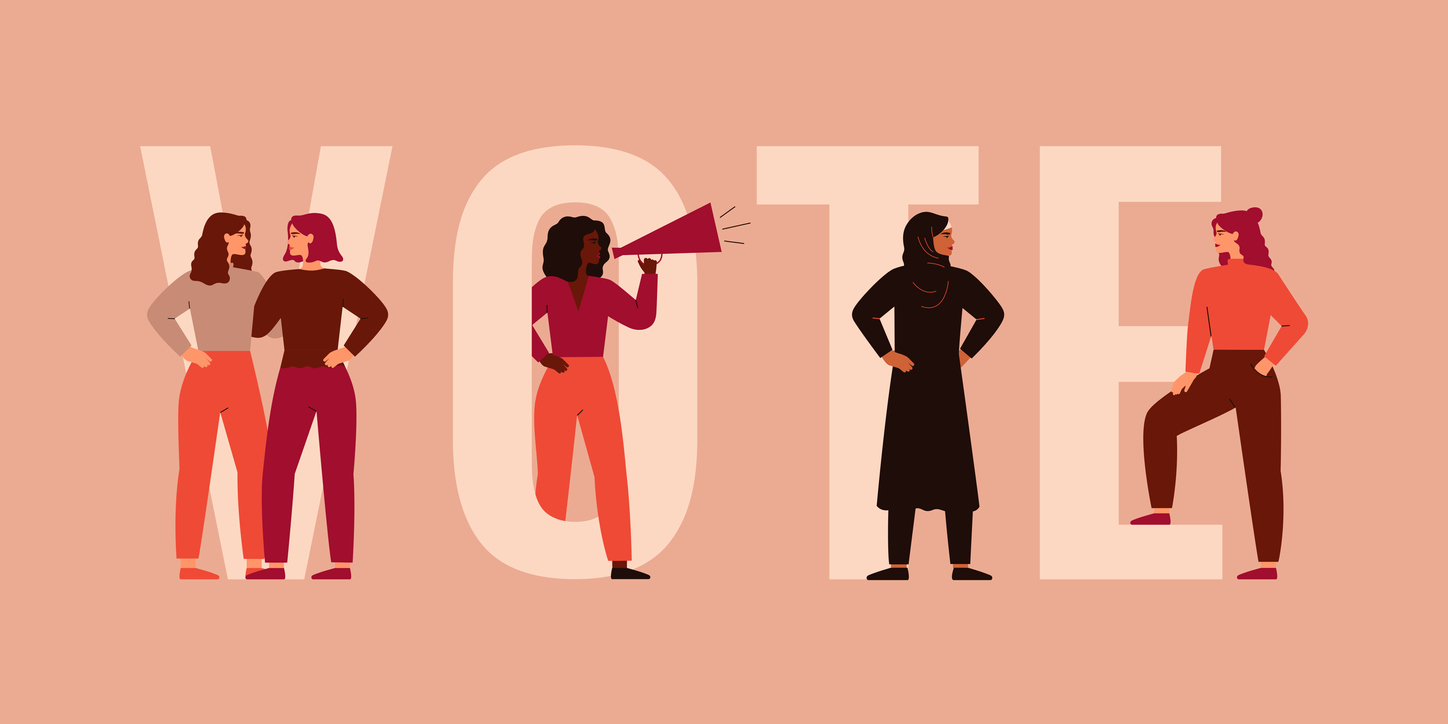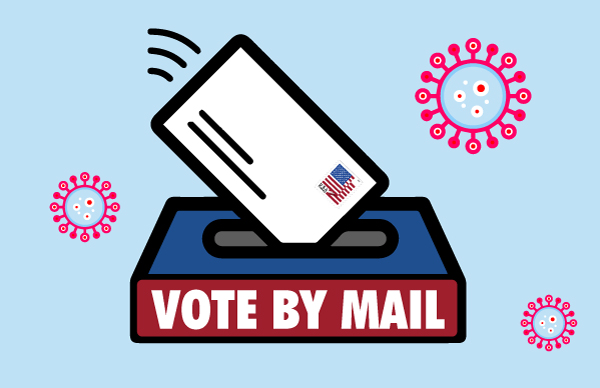
One Person, No Vote: The Bad Things that Could Happen on Nov. 3 and How to Prevent Them
On or before Tuesday, June 23, voters in New York’s 12th Congressional District cast ballots to decide who would be their Democratic nominee for Congress. The tightly contested race featured two frontrunners – incumbent U.S. Rep. Carolyn B. Maloney and challenger Suraj Patel, an attorney and former Obama campaign staffer.
Now, seven weeks later, no one in the district knows who won the election. Maloney has a 648–vote lead, but 65,000 mail-in ballots remain to be counted. The surge in mail-in balloting, caused by the coronavirus pandemic, caught election officials unprepared. 403,000 mail-in ballots were returned this cycle, compared with the 23,000 mail-in ballots that were returned and determined valid in 2016.
One thing is clear, though, and it offers an ominous warning for voting this November: many voters lost their right to vote. As many as one in five mail-in ballots were declared invalid before the envelopes containing the ballots were even opened – usually because of a missing postmark or missing signature.
And the invalidated ballots were not spread equally across all voters. Rejection rates in Manhattan and Queens, two boroughs with more white voters, were 19 percent in each borough. But the rejection rate in the part of Brooklyn that falls within the congressional district – which contains more Black voters – was 28 percent.

Voting is the foundation of American democracy, yet it’s under threat.
“Never in my wildest dreams did I think that after tripling the electorate turnout, we would then be fighting weeks later to just get our ballots counted,” Patel told the Washington Post. “It’s just a terrible canary in the coal mine for anyone looking at the November election.”
Voices for Human Needs, like many others, has warned of systemic – and racially biased – barriers that could make voting this November problematic – most recently in a June 12 blog post headlined, “COVID-19 and Nov. 3, 2020: A colossal disaster in the making?” That blog post examined election primary debacles in Georgia, Wisconsin, D.C., Maryland, and Pennsylvania.
Late last week, in a lengthy and in-depth article for Politico, journalist, historian, and author Garrett M. Graff outlined “8 big reasons Election Day could be a disaster.”
“November 3, even if it proceeds as scheduled, is likely to bring bureaucratic snafus and foreseeable chaos unfolding on a hundred different fronts at once, in a thousand voting precincts—all of which will leave the U.S. with its most uncertain, disputed result in a lifetime,” Graff rights.
Graff’s eight reasons why elections could go off the tracks:
- An uncontrolled pandemic, combined with flu season, could keep voters at home, as well as poll workers, most of whom are elderly volunteers.
- Many states, hoping to ward off polling-place problems, are rushing to update their voting procedures to allow for expanded absentee voting or even full-vote by mail. But they lack the resources to do this and to adequately hire and train election workers to handle new technologies.
- A drought of funding. More money is needed to implement vote-by-mail systems, which are both labor intensive and time sensitive (more later about what Congress may or may not do about this).
- A tidal wave of dislocated voters. Simply put, millions of Americans won’t be living where they thought they would be come November, either because of closed workplaces or the move toward distance learning. And even for those living in the same place, their polling locations likely will change. Do you usually vote at a nursing home in your neighborhood? Not this year. And churches, synagogues, government offices, and schools (where one in three Americans vote) may not be as welcoming as in the past.
- A storm of foreign attacks. (Enough said about this, although it too raises the need for additional funding and a heightened federal response.)
- A blizzard of misinformation and disinformation.
- Declining voter protections, an increase in lawsuits and no election watchdog. The Supreme Court’s 2013 ruling rolling back a key part of the Voting Rights Act, combined with lawsuits from both parties over who can vote and how easy or hard it should be, mean many people could be disenfranchised. And it doesn’t help that the three-member Federal Election Commission, which polices campaign finance violations, has been without a quorum for most of the past year.
- A refusal by a candidate to accept an election outcome (perhaps in part due to all of the factors above).

So what can be done?
First, let’s tackle the issue of mail-in balloting. Mail-in balloting needs to be allowed on a massive scale, although provisions must also be made for people who want to vote in person.
Writing for Democracy Docket, veteran elections litigator Marc Elias outlines four requirements that, at a minimum, states should implement to ensure that eligible voters may fully participate in the election this November:
- Postage must be free or prepaid by the government. No voter should have to pay to mail their ballot, period.
- Ballots postmarked on or before Election Day must count. Many states reject all ballots received after Election Day, even if postmarked on or before Election Day. This is simply wrong and unfair to voters who have done everything right but have their ballots thrown out because of delays with the postal service.
- Signature matching laws need to be reformed to protect voters. Increased vote-by-mail will dramatically increase the number of ballots with signature issues. Mail-in ballots with questionable signatures should be reviewed by three election officials. Only if all three find beyond a reasonable doubt that a signature does not match should it be set aside. Then, the voter should be notified by a combination of mail, phone, email and text and be given ten days to confirm that it is their lawful ballot.
- Community organizations should be permitted to help collect and deliver completed and sealed ballots. In many states, community organizations play a vital role in collecting and delivering voted, sealed mail ballots for counting. Voters without easy access to secure and reliable outgoing mail, or who need extra help to get their ballots delivered, rely on this practice.
Of course, Elias’ requirements for vote-by-mail represent only a small portion of what must be done to prepare for Nov. 3. States also need to expand voter registration to pick up demand created by shuttered DMV offices. For those who wish to vote in person, they must operate a sufficient number of early voting locations as well as day-of voting locations. They must hire enough poll workers, give them protective equipment, buy new tallying machines for mail-in ballots, and make sure workers are adequately trained in using new technologies.
All of this is going to take considerable sums of money, which local and state governments do not have right now. And this is where Congress needs to step up to the plate.
Congress already has allocated $400 million toward these measures, but that is a small drop in the bucket compared to what is needed. The House, as part of the HEROES Act (pandemic relief), has passed an additional $3.6 billion to help state and local election officials manage safe elections with more mail-in voting. The Senate has not included any funds in its new COVID relief bills to ensure that the election will be open, safe, and accurate.
Although this is just one of many significant differences between the House and Senate responses to the pandemic, it will have far-reaching consequences. Advocates must not allow Congress to let problems like those in New York’s 12th CD and elsewhere be magnified in the general election.

